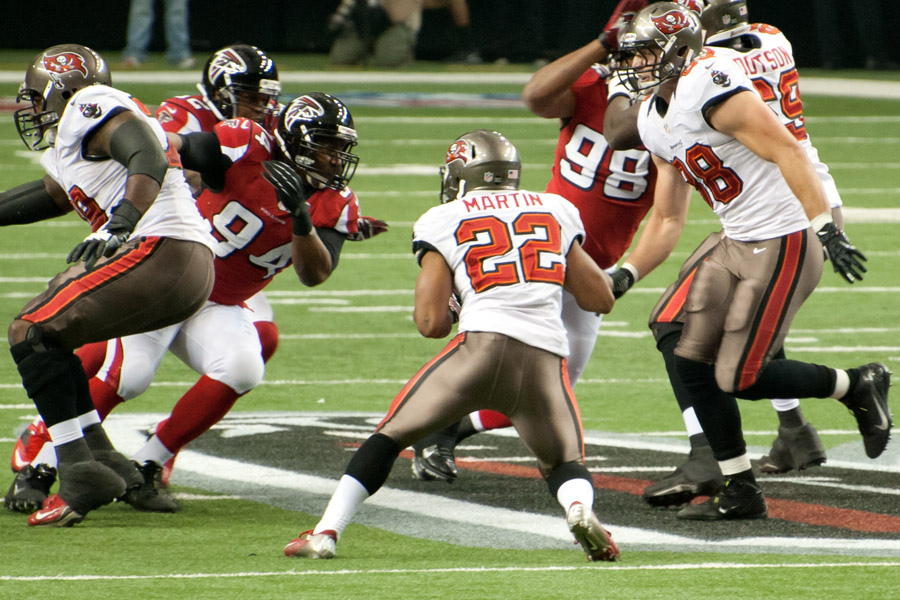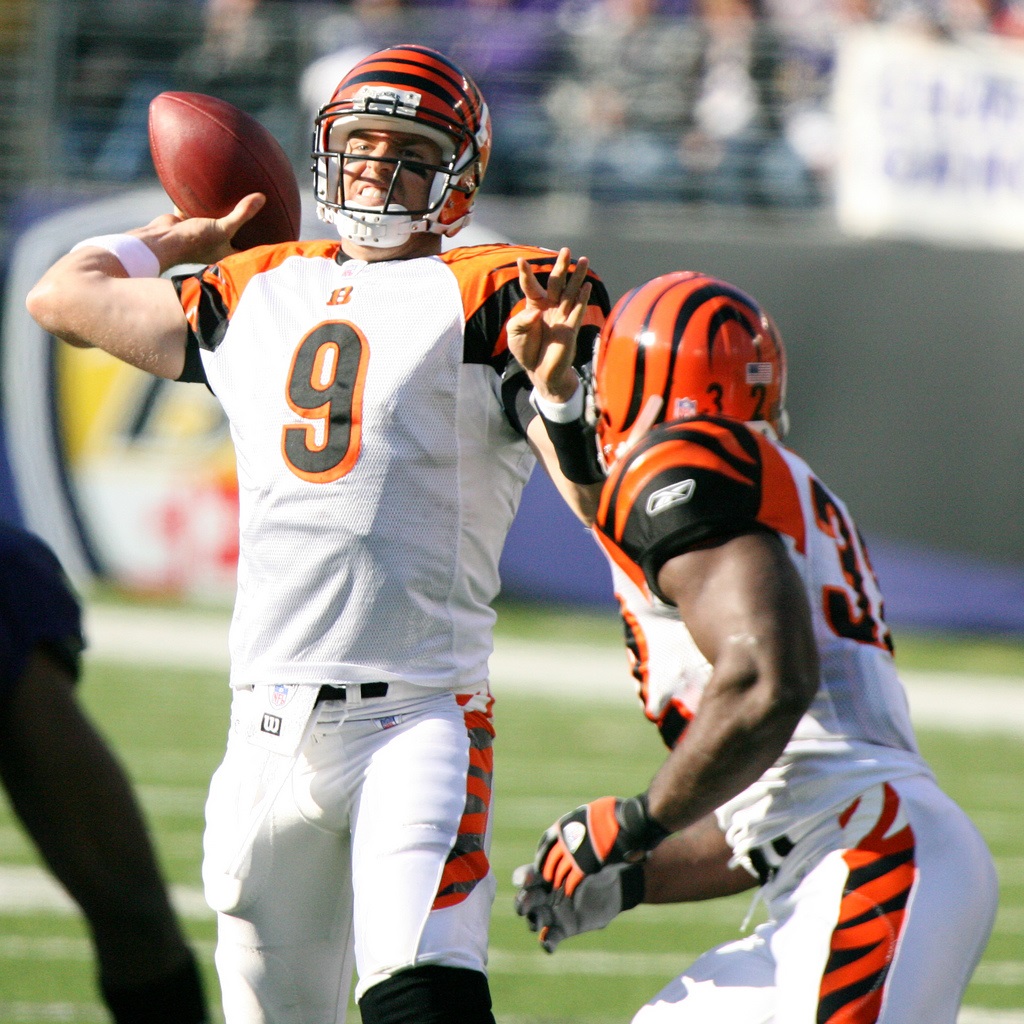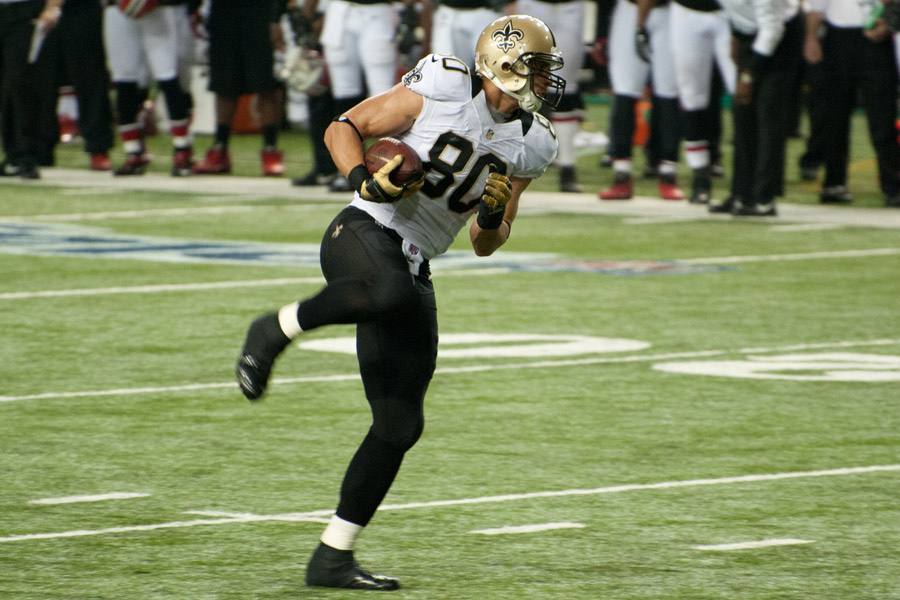
Once upon a time, D.J. Harper was the lead back in the Boise State offense over Doug Martin. Two ACL injuries later and now finishing his sixth year of eligibility, Harper is entering the NFL Draft. I remember seeing Harper before the injury and there was no doubt he could fly.
Most doubt Harper will ever be better than Martin in the NFL. However there is more to Harper’s game than speed, which is why the slower, post-injury version of Harper still has a chance to make an NFL roster and contribute to a starting lineup.
In fact, the post-injuries version of Harper still has more speed, burst, and change-of-direction quickness than many NFL starters. He also has an eye-popping skill that, after watching this particular running back class, I’m beginning to think is becoming more prevalent among running backs.
Patience
[youtube=http://youtu.be/ItPbhloob_A?start=74]
Backs with great speed often have an issue with patience – especially those with more straight-line skills. This 1st-and-10 run from a 11 personnel pistol with receivers 1×2 at the BSU 37 is a good example. Watch Harper press the run towards right guard, allowing his guard and tight end to pull across the formation to the left guard’s side, and then bend the run behind the them. All this is done close to the line of scrimmage and it opens a lane off left guard.
Harper makes a decisive cut downhill and up the left hash through this big hole for a quick six yards and runs through some of a wrap by the defensive back hitting his leg. Harper stumbles forward with a hop for another six yards, gaining 12 on the play. I like the second effort and balance as well as the ball security under his sideline arm.
[youtube=http://youtu.be/ItPbhloob_A?start=112]
Here’s another display of patience on the same style play: a 2×1 receiver, 11 personnel set on 1st and 10 with 4:38 in the half from the BSU 20. Once again Harper works behind his pulling guard and tight to the left end and he presses it before working to the edge. Harper demonstrates enough burst to work past the grasp of a backside defender and then turn his pads to back his way another few yards on a six-yard gain. Another nice display of ball security under his left arm.
Reading the Line of Scrimmage
[youtube=http://youtu.be/ItPbhloob_A?start=241]
This is a zone play on 1st and 10 with 8:07 in the third quarter from a 1×1 receiver, 21 personnel strong side I-formation set at the BSU 26. Harper has to deal with some penetration closing the middle creases as his fullback winds to the weak side of the formation.
Harper slows his steps and bounces to the strong side and away from the penetration. I though Harper made a quick decision and move to reach the line of scrimmage and veer away from the defender. He works outside his edge block that seals the inside and spins outside the defender at the flat. Nice job maintaining his balance to get another six yards for the first down on this play.
Balance and Speed
[youtube=http://youtu.be/ItPbhloob_A?start=169]
Harper doesn’t possess that cutback style of his old teammate Martin, whose ability to sink his hips and cut is akin to Ray Rice’s style of running. However, Harper has a quick feet and explosiveness in a gait that is similar to runners like Demarco Murray and Darren McFadden.
This 11 personnel 1×2 receiver set on 2nd and 10 at the Fresno State 38 with 2:20 in the half is a good example of Harper’s Murray-McFadden style on display. Harper makes an excellent cutback outside the left guard to reach the line of scrimmage, sprinting through a big gap where he is fast enough to bend the run a step outside the oncoming safety. Harper earns a quick four yards, runs through the wrap to his leg and spins free of the contact just in time to foil the angle of the cornerback working from the flat.
This is a nice illustration of balance and agility at a pace fast enough to get outside, earn the first down, and then reach the left flat for another 18 yards and the score. Harper finishes with a dive over the pylon and extends his left arm for good measure.
Receiving
What got my attention about Harper’s game is his work as a down-field receiver. Perhaps I haven’t watched enough Boise State games, but this surprised me. Watch Harper exit the backfield, work past the linebacker’s jam, and maintain his course up the seam. And of course, there’s the catch.
[youtube=http://youtu.be/w-Ut-ABx-d0?start=58]
Harper looks like a wide receiver on this play, dragging his feet inside the boundary while extending to the end line. It’s not the only catch of this kind I’ve seen from Harper. Although the video editing is a little too Pleasantville for my liking, it’s a terrific catch.
[youtube=http://youtu.be/gp0Wu7B99yM?start=68]
You’ll probably have to rewind and play a few times to see how Harper works open at the last moment and makes the play with a great adjustment in tight coverage. To catch the ball with this kind of speed and body control is a pro-caliber play. There was a third reception I saw against Georgia in the left flat where he had to make a catch after contact, but I couldn’t find a good replay to display.
If Harper can stay healthy and display this kind of speed, balance, patience, and body control as runner and receiver, Harper could be shaking hands with his former backfield mate after a hard-fought game where both runners got their uniforms dirty.
For analysis of skill players in this year’s draft class, download the 2013 Rookie Scouting Portfolio available April 1. Prepayment is available now. Better yet, if you’re a fantasy owner the 56-page Post-Draft Add-on comes with the 2013 RSP at no additional charge. Best, yet, 10 percent of every sale is donated to Darkness to Light to combat sexual abuse. You can purchase past editions of the Rookie Scouting Portfolio for just $9.95 apiece.





















